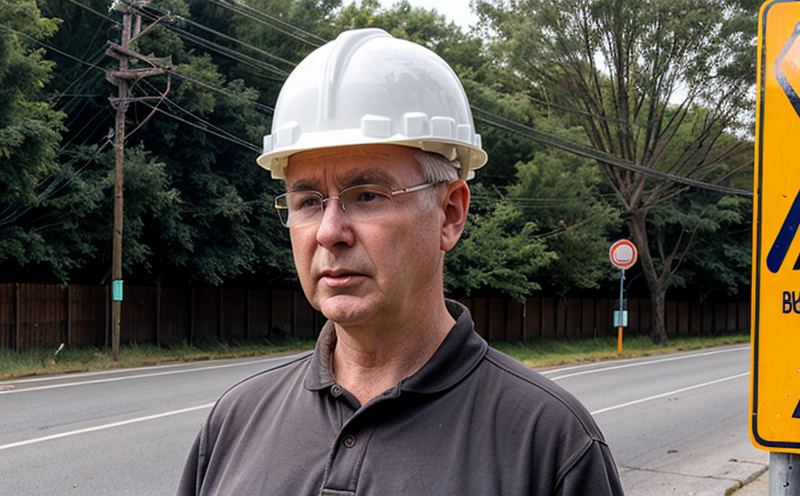ISO 13472-2 Spot Measurement of Road Surface Noise Absorption
The ISO 13472-2 standard is pivotal in the field of acoustics, vibration, and noise testing, particularly for assessing road surface noise absorption. This method allows for precise spot measurements to evaluate the sound insulation properties of road surfaces. It is widely recognized by regulatory bodies around the world as a reliable means to ensure compliance with environmental noise regulations.
The standard provides detailed procedures for conducting spot measurements on road surfaces using a specified apparatus that includes a sound source, a receiver, and a measuring device. The testing procedure involves placing the sound source at predetermined positions across the test area and recording the received sound levels. These measurements are then used to calculate the noise reduction achieved by different road surface types.
The importance of this method lies in its ability to provide accurate and reproducible results that can be used for both research and regulatory compliance purposes. By measuring the noise absorption properties of road surfaces, engineers and policymakers can make informed decisions about selecting materials that minimize traffic-related noise pollution.
Compliance with ISO 13472-2 is crucial for industries involved in road construction and management. This ensures that the materials used meet international standards and are effective in reducing noise levels. The standard also plays a key role in R&D activities, helping engineers develop new technologies aimed at enhancing sound insulation properties of road surfaces.
For quality managers and compliance officers, understanding ISO 13472-2 is essential to ensure that their projects meet environmental regulations. This knowledge helps them stay ahead of changing standards and implement best practices in noise control. In the context of R&D, this method provides a robust framework for evaluating new materials and technologies.
The implementation process typically involves several key steps: selecting an appropriate test site, preparing the road surface according to specified criteria, conducting spot measurements using the prescribed apparatus, and analyzing the data collected from these measurements. The results are then used to evaluate the effectiveness of different road surfaces in terms of noise reduction.
Understanding ISO 13472-2 is not only beneficial for those directly involved in testing but also for procurement officers who need to ensure that suppliers meet specified quality and performance standards. By familiarizing themselves with this standard, they can specify the exact requirements needed for their projects, thus ensuring consistent and high-quality outcomes.
In summary, ISO 13472-2 is a critical tool in the acoustics, vibration, and noise testing sector, providing a standardized method for assessing road surface noise absorption. Its application helps to minimize environmental impact while also supporting regulatory compliance and innovation in materials science.
Benefits
- Enhanced Regulatory Compliance: Ensures that all tests meet international standards, facilitating smoother market entry for products.
- Informed Decision-Making: Provides accurate data to support the selection of effective noise reduction materials and technologies.
- Environmental Impact Reduction: Helps in developing solutions that minimize environmental noise pollution.
- Research and Development Support: Offers a robust framework for evaluating new materials and technologies.
Customer Impact and Satisfaction
- Improved Product Quality: Ensures that products meet high-quality standards, enhancing customer satisfaction.
- Increased Market Access: Compliance with international standards can lead to broader market opportunities.
- Enhanced Reputation: Demonstrating adherence to recognized standards improves the company's reputation and credibility.
- Cost Efficiency: By identifying effective noise reduction solutions early in the development process, costs associated with rework or redesign are minimized.
International Acceptance and Recognition
The ISO 13472-2 standard enjoys widespread acceptance across various countries and regions. Its adoption by regulatory bodies ensures that testing results are universally recognized, facilitating global trade in road construction materials. Many nations incorporate this standard into their national regulations, making it an essential tool for companies operating internationally.
International organizations such as the European Committee for Standardization (CEN) and the American Society for Testing and Materials (ASTM) have endorsed ISO 13472-2, further emphasizing its importance in the global market. This standardization not only promotes consistency but also fosters collaboration among countries with shared interests in noise reduction.
The recognition of ISO 13472-2 extends beyond mere compliance; it represents a commitment to excellence in acoustics testing and road surface design. By adhering to this standard, companies can demonstrate their dedication to sustainable practices and high-quality production processes.





